预计到 2031 年,酒店纺织品市场规模将从 2024 年的 110.6 亿美元增至 184.6 亿美元。预计 2025 年至 2031 年期间该市场的复合年增长率将达到7.8 %。
全球分析
国际旅游业的蓬勃发展、对可持续材料(例如有机棉和再生面料)需求的不断增长,以及印度和巴西市场的蓬勃发展,都推动了酒店业对纺织品的需求。此外,酒店业还有机会利用智能纺织品(具有抗菌和温度调节功能)、定制或个性化纺织品来提升品牌形象,以及利用技术(提高纺织效率)来提升宾客体验、促进可持续发展,并扩大市场规模和增长潜力。
全球酒店纺织品市场概览
随着旅游业的蓬勃发展以及新酒店对优质床单、毛巾和床上用品的需求不断增长,全球酒店纺织品市场蓬勃发展。市场驱动力包括可持续发展趋势以及耐用环保纺织品的日益普及。纺织品和面料制造技术的进步也将有助于酒店纺织品市场的增长。北美和欧洲继续主导酒店纺织品市场。预计亚太地区将随着酒店业和纺织品投资的增长而崛起。供应链问题持续困扰着该行业,原材料成本也在不断上涨。
您将获得任何报告的免费定制,包括本报告的部分内容、国家级分析、Excel 数据包,以及为初创企业和大学提供优惠和折扣
酒店纺织品市场:战略洞察
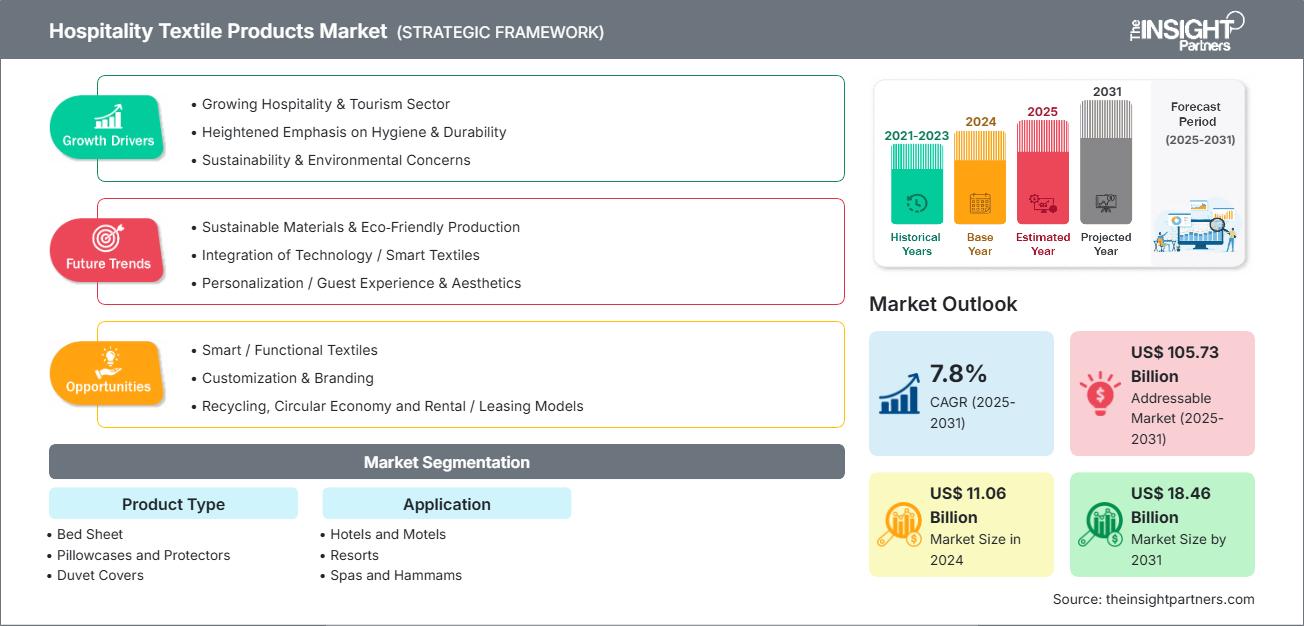
- 获取此报告的顶级关键市场趋势。此免费样品将包括数据分析,从市场趋势到估计和预测。
全球酒店纺织品市场驱动力和机遇
市场驱动因素:
- 酒店业的增长:酒店、度假村和度假租赁的扩张增加了对床单、毛巾、窗帘和纺织品的需求。
- 客人期望不断提高:旅行者越来越期望酒店和度假村体验能提供更优质的舒适度和更高的审美水平,这促使酒店在耐用和功能性纺织品方面投入更多资金。
- 可持续发展趋势:对环保和符合道德标准的纺织品的需求不断增加。
- 频繁的翻新周期:酒店定期翻新接待空间以维护其品牌形象,从而导致对纺织品和床上用品的购买更新。
市场机会:
- 智能抗菌纺织品:包括技术(例如防污、防臭)满足消费者对卫生的偏好。
- 环保产品线:设计有机、可回收或可生物降解的纺织品为不断扩大的可持续旅游市场创造了机会。
- 定制和品牌:定制纺织品(标识、颜色、设计)可帮助酒店区分其品牌,同时增强客人体验。
- 新兴市场增长:亚太、非洲和拉丁美洲酒店业的增长继续创造酒店市场需求。
全球酒店纺织品市场报告细分分析
全球酒店纺织品市场细分如下:
按产品类型:
- 床单 这些是用于覆盖酒店和度假村床铺的平织织物,由棉、聚酯混纺或亚麻制成,具有耐用性和舒适性。
- 平板床单平织面料用于床上用品的顶层或作为独立的床上用品,提供光滑、清爽的感觉,并有适合客房的尺寸。
- 床笠平纹织物设计用于紧密贴合床垫,通常四边都有弹性,以提供整洁的外观和对床垫的保护并为客人提供舒适感。
- 装饰性床单设计采用装饰性缝线和图案,可用于装饰床上用品,并可用于酒店房间装饰中的豪华住宿包裹的功能性用途。
- 婴儿床床单酒店和汽车旅馆的婴儿床配有柔软、防过敏的机织面料,注重客人的安全和有婴儿的家庭的舒适。
- 枕套和保护套 机织面料为酒店客人的枕头提供舒适感,并且有多种面料可供选择,有些带有塑料套,以保护枕头并延长酒店的使用寿命。
- 羽绒被套可拆卸羽绒被或被套,易于机洗,为酒店场所提供功能、风格和清洁度。
- 浴室纺织品浴室中使用的酒店浴巾柔软、吸水性强、耐用,适合多位客人使用。
- 浴巾和泳池毛巾 吸水浴巾,尺寸较大,用于室内沐浴和泳池边,由棉或超细纤维制成,可快速干燥和吸收。
- 手巾 这类柔软毛巾尺寸较小,用于洗手后擦干双手。适用于浴室或酒店共用区域,兼顾美观与功能。
- 浴室垫和地毯厚实且吸水的地板材料,为客用浴室或套房提供安全性、舒适性和时尚感,背面有防滑表面材料。
- 浴袍 舒适的浴袍旨在帮助客人放松身心。浴袍通常由棉质或聚酯超细纤维制成。高档酒店为客人提供这种奢华的氛围。
- 毛毯、羽绒被和棉被
为客人提供舒适的温暖床上用品,提供各种适合所有季节的固定装置、重量和材料。
- 合成轻质聚酯纤维或超细纤维填充的羽绒被和被子耐用且价格实惠,适合酒店业使用。
- 天然填充羽绒被和棉被含有羽绒或羊毛,具有极佳的保暖性和透气性,被视为酒店等旅行中的豪华床上用品。
- 枕头由鸡毛、泡沫或合成材料制成的支撑性床上用品,耐用且适合冒险,为客人提供舒适的体验。
- 床垫垫和床垫套是实际床垫的优质保护罩,为酒店业频繁使用的客人提供舒适、卫生的触感和质量。
- 厨房毛巾 酒店用餐区使用的耐用、吸水的厨房毛巾通常由棉或超细纤维制成,可承受频繁反复清洗。
- 桌布 优雅或实用的餐桌布通常由防污面料或高端亚麻布制成,以提供精致的用餐体验。
按应用:
- 酒店和汽车旅馆面料适用于快速更新的客房,强调耐用性、保持吸引力和舒适性,同时最大限度地利用价格实惠的面料,如棉涤混纺面料。
- 度假村提供豪华高端的纺织品,为客人提供优质的住宿体验,包括柔软的床单、毛绒毛巾和装饰性床上用品,以吸引视觉注意力。
- 水疗中心和土耳其浴室专门制造毛绒浴袍、吸水毛巾和防滑浴垫等纺织品,用于在健康环境中提供放松、卫生的功能和耐用性。
按地理位置:
- 北美
- 欧洲
- 亚太地区
- 中东和非洲
- 南美洲和中美洲
亚太地区的酒店纺织品市场预计将出现最快的增长。
酒店纺织品市场区域洞察
Insight Partners 的分析师已详尽阐述了预测期内影响酒店纺织品市场的区域趋势和因素。本节还讨论了北美、欧洲、亚太地区、中东和非洲以及南美和中美洲的酒店纺织品市场细分和地域分布。
酒店纺织品市场报告范围
| 报告属性 | 细节 |
|---|---|
| 2024年的市场规模 | 110.6亿美元 |
| 2031年的市场规模 | 184.6亿美元 |
| 全球复合年增长率(2025-2031) | 7.8% |
| 史料 | 2021-2023 |
| 预测期 | 2025-2031 |
| 涵盖的领域 | 按产品类型
|
| 覆盖地区和国家 | 北美
|
| 市场领导者和主要公司简介 |
|
酒店纺织品市场参与者密度:了解其对商业动态的影响
酒店纺织品市场正在快速增长,这得益于终端用户需求的不断增长,而这些需求的驱动因素包括消费者偏好的不断变化、技术进步以及对产品优势的认知度不断提高。随着需求的增长,企业正在扩展产品线,不断创新以满足消费者需求,并抓住新兴趋势,从而进一步推动市场增长。
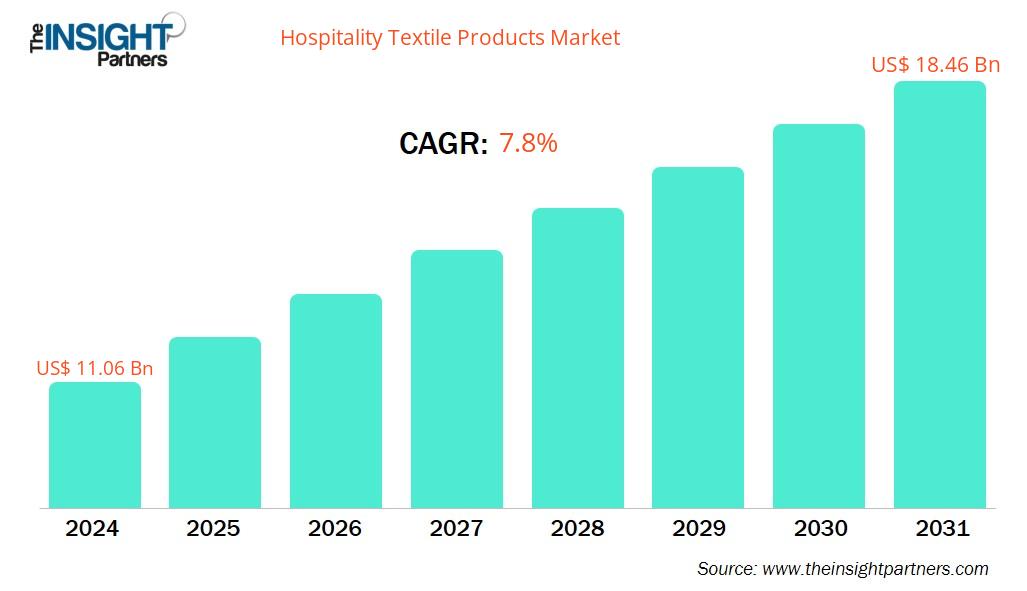
- 获取酒店纺织品市场主要参与者概览
全球酒店纺织品市场份额(按地区)分析
预计未来几年亚太地区将快速增长。亚太地区的新兴市场也为酒店纺织品供应商提供了许多尚未开发的扩张机会。
各个地区的酒店纺织品市场增长情况不同。
1. 北美
- 市场份额:高端酒店客户强劲需求推动市场份额大幅增长
- 关键驱动因素:
- 对可持续和环保纺织品的需求增加。
- 扩大豪华酒店和度假村开发。
- 趋势:增加有机和再生材料的利用率,以及更先进的耐用性纺织品。
2.欧洲
- 市场份额:领先市场,高度重视质量和设计
- 关键驱动因素:
- 奢华和精品酒店的期望非常高
- 监管推动可持续和符合道德标准的材料
- 趋势:酒店使用抗菌和阻燃纺织品
3. 亚太地区
- 市场份额:见证酒店和旅游业的快速增长
- 关键驱动因素:
- 国际品牌在新兴市场的发展与成长。
- 对高价值和高质量纺织产品的需求不断增加
- 趋势:本地材料和定制纺织品设计的使用增加。
4.中东和非洲
- 市场份额:豪华酒店和中端酒店物业的新兴市场正在增长
- 关键驱动因素:
- 游客数量增加,酒店项目广泛开展。
- 高温气候下对耐用、高性能纺织品的需求增加。
- 趋势:豪华酒店对华丽设计和智能纺织品的需求日益增长
5. 南美洲和中美洲
- 市场份额:生态旅游市场份额适中,具有增长潜力
- 关键驱动因素:
- 增加对旅行可持续性和可持续旅游业的投资。
- 渴望能够反映纺织品文化背景的明亮而大胆的纺织品。
- 趋势:使用天然纤维和环保生产方法
全球酒店纺织品市场参与者密度:了解其对商业动态的影响
市场密度高,竞争激烈
由于 Century Linen & Uniform Inc 和 Sysco Corp 等老牌企业的存在,竞争十分激烈。Adova、Beaumont & Brown 和 KASSATEX 等区域性和利基供应商也加剧了不同地区的竞争格局。
这种激烈的竞争促使公司通过提供以下产品脱颖而出:
- 纺织品兼具抗菌、阻燃和吸湿排汗特性
- 受文化影响的纺织品设计与品牌美学
机遇与战略举措
- 发展为健康酒店业的利基纺织品,包括水疗床单和防过敏床上用品。
- 采用有机、再生和可生物降解材料来满足环保纺织品的需求
在全球酒店纺织品市场运营的主要公司有:
- 维纳斯集团
- 世纪亚麻制服有限公司
- 卡萨泰克斯
- DZEE纺织品有限责任公司
- 汉莎纺织有限公司
- 西斯科公司
- 优质棉公司
- 阿多瓦
- 博蒙特和布朗
- 路伯特克斯国际公司
免责声明:以上列出的公司没有按任何特定顺序排列。
研究过程中分析的其他公司:
- 特兰佐尼克工业公司
- 绿洲毛巾
- 理查德·哈沃斯
- Almatex有限公司
- 弗雷特
全球酒店纺织品市场新闻及最新发展
- Raza Heritage Holdings 收购 Frette Raza Heritage Holdings 从伦敦私募股权基金 Change Capital Partners 手中收购了 Frette。此举巩固了 Raza Heritage Holdings 在消费品领域的地位。
全球酒店纺织品市场报告覆盖范围和交付成果
《全球酒店纺织品市场规模和预测(2021-2031)》报告对市场进行了详细分析,涵盖以下领域:
- 全球酒店纺织品市场规模以及涵盖范围内所有主要酒店纺织品市场领域的全球、区域和国家层面的预测
- 全球酒店纺织品市场趋势,以及市场动态,如驱动因素、限制因素和关键机遇
- 详细的波特和 SWOT 分析
- 全球酒店纺织品市场分析涵盖主要市场趋势、全球和区域框架、主要参与者、法规以及近期酒店纺织品市场发展
- 行业格局和竞争分析,涵盖酒店纺织品市场集中度、热图分析、知名参与者以及全球酒店纺织品市场的最新发展
- 详细的公司简介
- 历史分析(2 年)、基准年、预测(7 年)及复合年增长率
- PEST和SWOT分析
- 市场规模、价值/数量 - 全球、区域、国家
- 行业和竞争格局
- Excel 数据集
近期报告
客户评价
购买理由
- 明智的决策
- 了解市场动态
- 竞争分析
- 客户洞察
- 市场预测
- 风险规避
- 战略规划
- 投资论证
- 识别新兴市场
- 优化营销策略
- 提升运营效率
- 顺应监管趋势












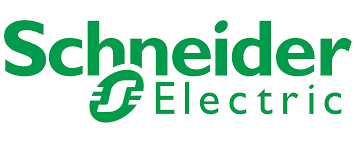


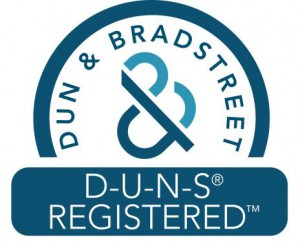
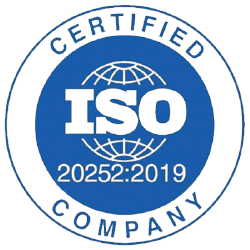



 获取免费样品 - 酒店纺织品市场
获取免费样品 - 酒店纺织品市场